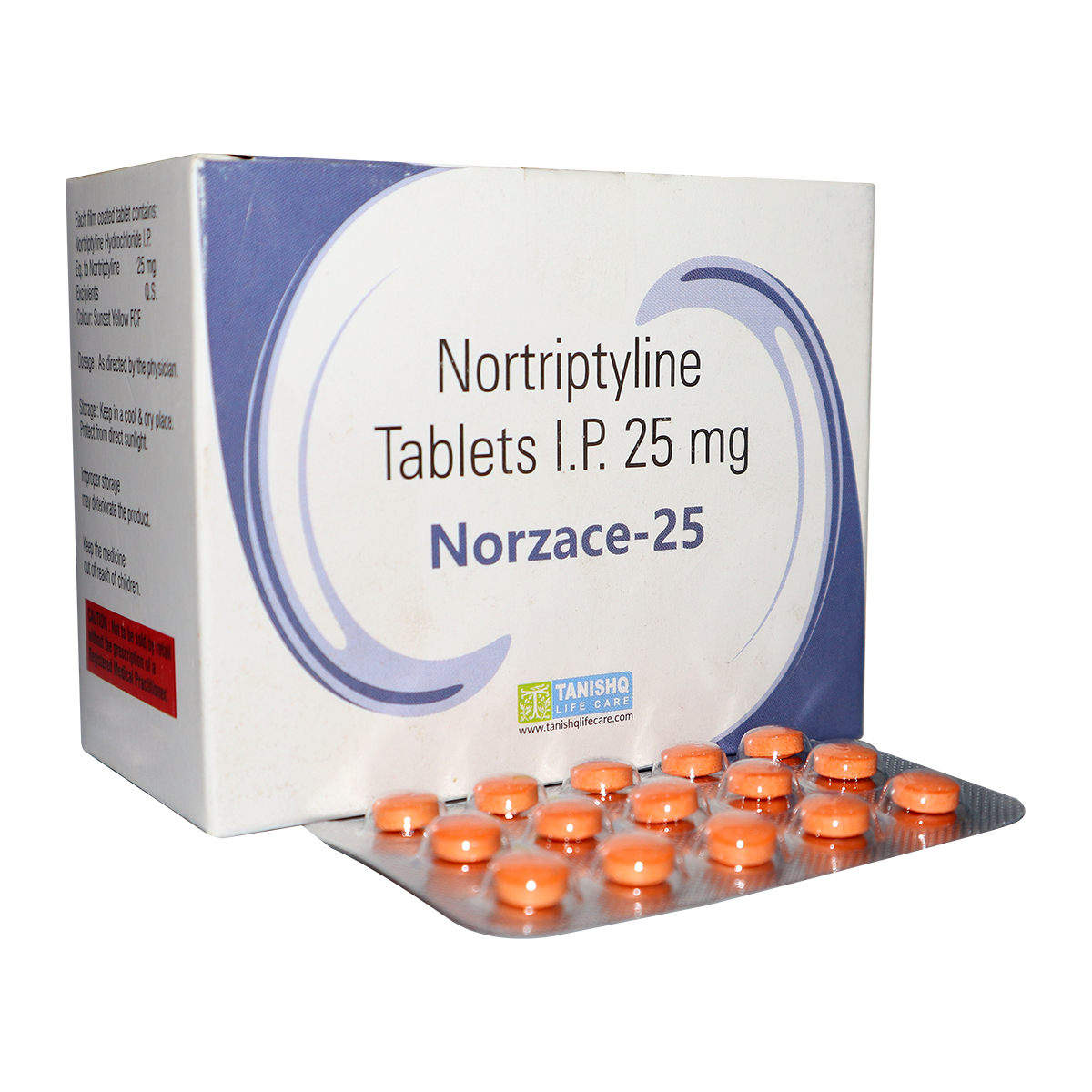
Nortriptyline 25mg Tablet
Nortriptyline is a tricyclic antidepressant (TCA) that is commonly used to treat depression, chronic pain, and other conditions. It is a metabolite of amitriptyline, and it works by altering the levels of neurotransmitters like serotonin and norepinephrine in the brain. This helps improve mood, relieve pain, and manage various other symptoms.
- Recommended Usage
Indications
- Major Depressive Disorder (MDD): It is effective in treating depression by improving mood and overall functioning.
- Chronic Pain: It is used for managing neuropathic pain, fibromyalgia, chronic back pain, and other pain syndromes.
- Neuropathic Pain: It is particularly helpful for pain caused by nerve damage, such as diabetic neuropathy or post-herpetic neuralgia.
- Migraine Prevention: Nortriptyline is sometimes used to prevent migraines, reducing their frequency and severity.
- Insomnia: Due to its sedative effects, Nortriptyline may help people with sleep disturbances related to depression or anxiety.
- Anxiety Disorders: While not a first-line treatment, it may be prescribed off-label for generalized anxiety disorder (GAD) or panic disorder.
Dosage and Administration
Starting Dose: The usual initial dose is 25mg per day, taken at night. This helps reduce the risk of side effects like drowsiness.
Dose Adjustment: Based on how the patient responds, the dose may be gradually increased to 50-75mg per day. For certain conditions, the dose may be raised up to 100mg per day, depending on individual needs and tolerance.
Elderly or sensitive individuals: A lower starting dose (e.g., 10-25mg) is recommended to minimize the risk of side effects.
Precautions
Allergic Reaction: People with a known allergy to nortriptyline or other tricyclic antidepressants should avoid this medication.
Heart Conditions: Nortriptyline may cause arrhythmias, tachycardia, or other heart-related issues, so it must be used with caution in people with heart disease or high blood pressure.
Glaucoma: Caution should be used in individuals with narrow-angle glaucoma.
Liver and Kidney Issues: Dose adjustments may be necessary.
Suicidal Thoughts: As with other antidepressants, Nortriptyline may increase the risk of suicidal thoughts, particularly in children, adolescents, and young adults.
Pregnancy and Breastfeeding: Use during pregnancy should be avoided unless the benefits outweigh the risks.
Benefits
Depression Relief: Nortriptyline is effective in treating depression by improving mood and energy levels.
Pain Management: It provides relief from chronic pain conditions, especially those related to nerve damage.
Migraine Prevention: Nortriptyline helps prevent migraines, reducing their frequency and intensity over time.
Improved Sleep: Its sedative properties can help those struggling with insomnia, especially related to depression.
Anxiolytic Effects: Though not first-line, it may reduce symptoms of anxiety disorders, especially when other treatments are insufficient.
Product Category
- Anti Infective
- Injectables
- Pre Filled Syringe
- Immunosuppressants
- Anti Ulcerant/ppis
- Joint Care
- Enzymes
- Heamatinic Agents
- Antioxidant Multivitamins
- Laxatives
- Anti Alergic
- Corticosteroids & Combinations
- Anti Fungal
- Medicated Soaps
- Emollients and Moisturisers
- Face Care
- Puva & Sun Protectors
- Hair Care
- Anti Acne Preparation
- Analgesics Antipyretics & Anti Inflammatory
- Anti Spasmodic & Anti Emetic
- Expectorants Antitussives & Mucolytics
- Antidiarrheals
- Cardiac Drugs
- Antipsychotics
- Anti Epileptics
- Migraine
- Anti Dyspetic
